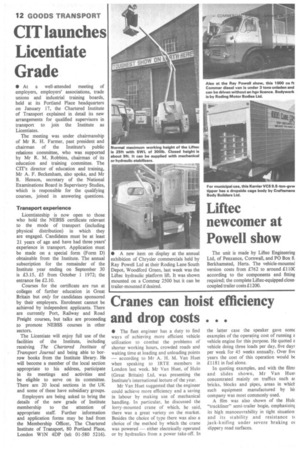Cranes can hoist efficiency and drop costs • • •
Page 14

If you've noticed an error in this article please click here to report it so we can fix it.
• The fleet engineer has a duty to find ways of achieving more efficient vehicle utilization to combat the problems of shorter working hours, crowded roads and waiting time at loading and unloading points — according to Mr A. H. M. Van Huet when speaking to IRTE members in London last week. Mr Van Huet. of Hubo (Great Britain) Ltd, was presenting the Institute's international lecture of the year.
Mr Van Huet suggested that the engineer could achieve more efficiency and a saving in labour by making use of mechanical handling. In particular, he discussed the lorry-mounted crane of which, he said, there was a great variety on the market. Besides the choice of type there was also a choice of the method by which the crane was powered either electrically operated or by hydraulics from a power take-off. In the latter case the speaker gave somc examples of the operating cost of running a vehicle engine for this purpose. He quoted s vehicle doing three loads per day, five days per week for 45 weeks annually. Over fivc years the cost of this operation would bc 1181 in fuel alone.
In quoting examples, and with the films and slides shown, Mr Van Huei concentrated mainly on traffics such as bricks, blocks and pipes, areas in whicl such equipment manufactured by his company was most commonly used.
A film was also shown of the Huk "trackliner" semi-trailer bogie, emphasizinE its high manoeuvrability in tight situation and its stability and resistance tc jack-knifing under severe braking oi slippery road surfaces.
























































































